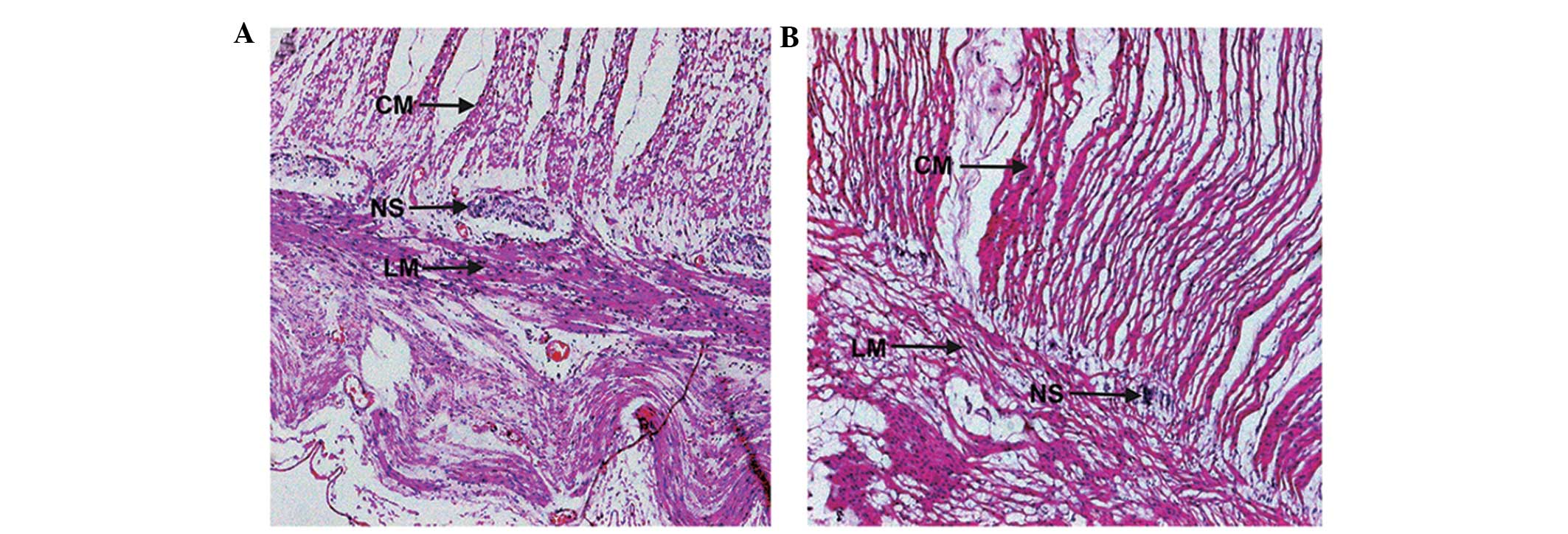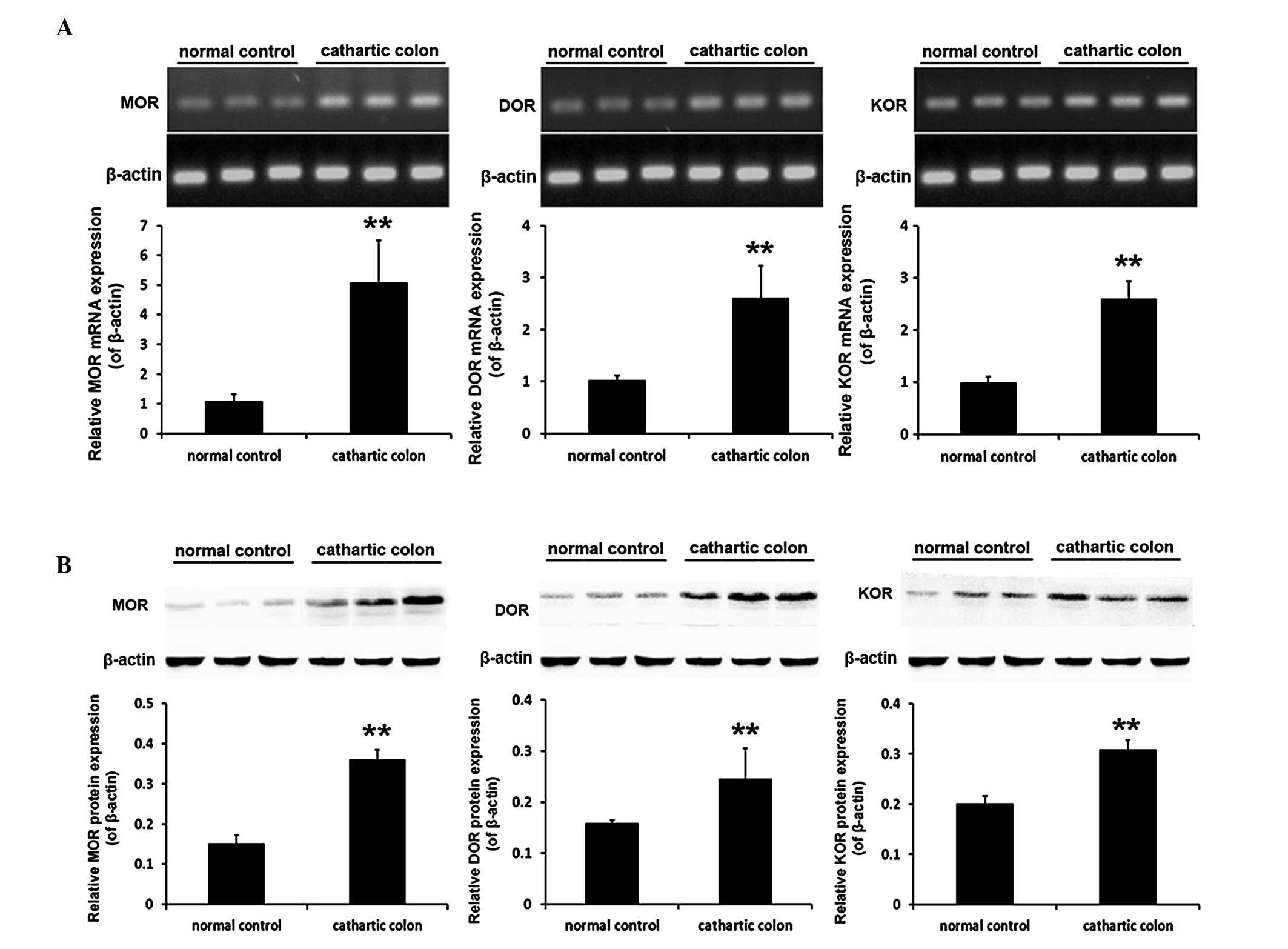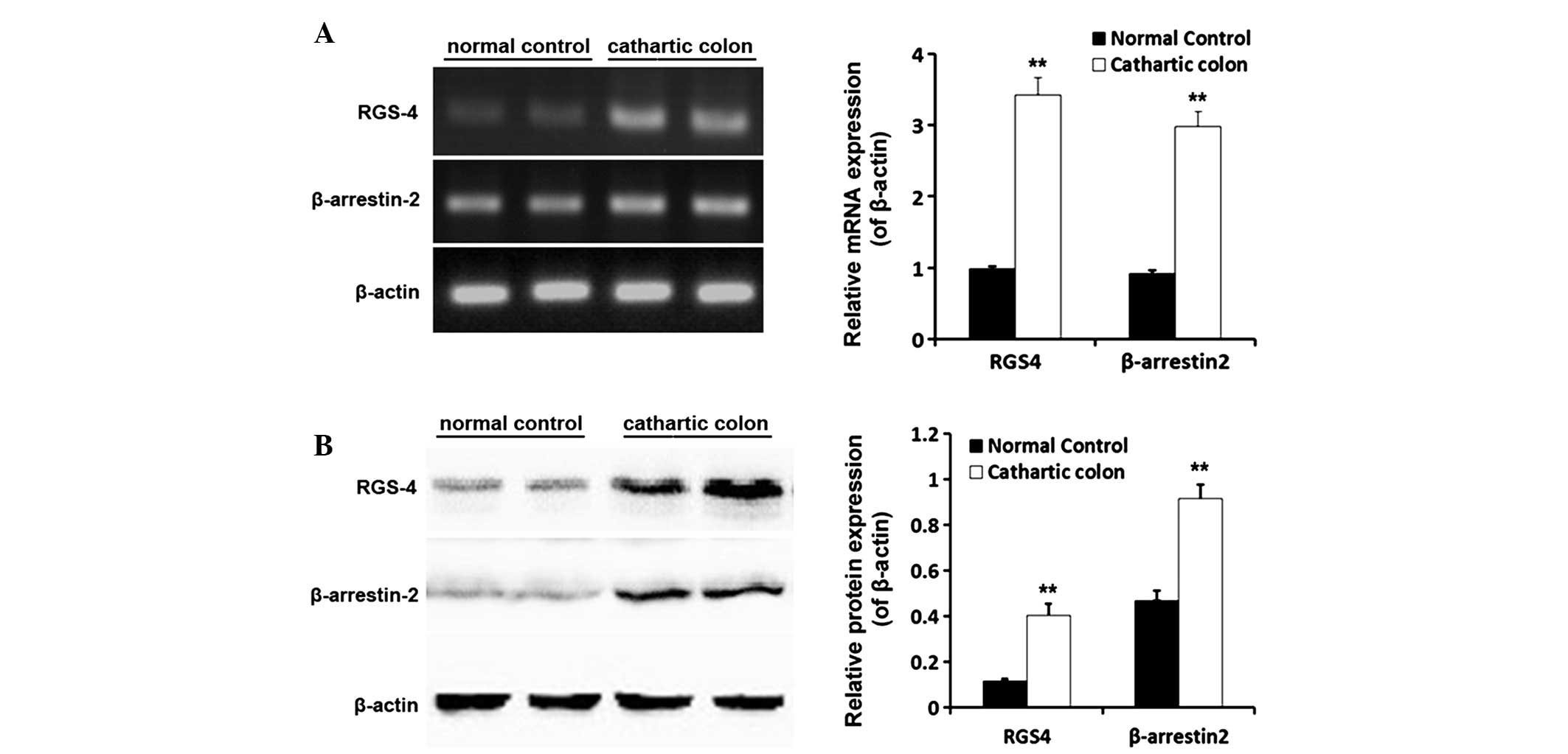|
1
|
Johanson JF: Definitions and Epidemiology
of Constipation. Constipation. Wexner SD and Duthie GS: 2nd
Edition. Springer Publishing; London: pp. 1–8. 2008
|
|
2
|
Bassotti G, Roberto GD, Sediari L and
Morelli A: Toward a definition of colonic inertia. World J
Gastroenterol. 10:2465–2467. 2004.PubMed/NCBI
|
|
3
|
Frattini JC and Nogueras JJ: Slow transit
constipation: a review of a colonic functional disorder. Clin Colon
Rectal Surg. 21:146–152. 2008. View Article : Google Scholar : PubMed/NCBI
|
|
4
|
Knowles CH and Martin JE: Slow transit
constipation: a model of human gut dysmotility. Review of possible
aetiologies. Neurogastroenterol Motil. 12:181–196. 2000. View Article : Google Scholar : PubMed/NCBI
|
|
5
|
Heilbrun N: Roentgen evidence suggesting
enterocolitis associated with prolonged cathartic abuse. Radiology.
41:486–491. 1943. View
Article : Google Scholar
|
|
6
|
Urso FP, Urso MJ and Lee CH: The cathartic
colon: pathological findings and radiological/pathological
correlation. Radiology. 116:557–559. 1975. View Article : Google Scholar : PubMed/NCBI
|
|
7
|
Zhang J, Ferguson SS, Barak LS, et al:
Role for G protein-coupled receptor kinase in agonist-specific
regulation of mu-opioid receptor responsiveness. Proc Natl Acad Sci
USA. 95:7157–7162. 1998. View Article : Google Scholar : PubMed/NCBI
|
|
8
|
Li HY, Yan X, Xue QL, et al: Effects of
nociceptin/orphanin FQ on rats with cathartic colon. World J
Gastroenterol. 13:141–145. 2007. View Article : Google Scholar : PubMed/NCBI
|
|
9
|
Pol O, Alameda F and Puig MM: Inflammation
enhances mu-opioid receptor transcription and expression in mice
intestine. Mol Pharmacol. 60:894–899. 2001.PubMed/NCBI
|
|
10
|
Bagnol D, Mansour A, Akil H and Watson SJ:
Cellular localization and distribution of the cloned mu and kappa
opioid receptors in rat gastrointestinal tract. Neuroscience.
81:579–591. 1997. View Article : Google Scholar : PubMed/NCBI
|
|
11
|
Poonyachoti S, Kulkarni-Narla A and Brown
DR: Chemical coding of neurons expressing delta- and kappa-opioid
receptor and type I vanilloid receptor immunoreactivities in the
porcine ileum. Cell Tissue Res. 307:23–33. 2002. View Article : Google Scholar : PubMed/NCBI
|
|
12
|
Pappagallo M: Incidence, prevalence, and
management of opioid bowel dysfunction. Am J Surg. 182(5A Suppl):
11S–18S. 2001. View Article : Google Scholar
|
|
13
|
Bin Lu, Mei Wang, Fan YH, et al: The study
of nerve growth factor and its receptor in the rat cathartic colon.
Chinese Journal of Digestion. 11:684–687. 2004.
|
|
14
|
Furness JB: The enteric nervous system and
neurogastroenterology. Nat Rev Gastroenterol Hepatol. 9:286–294.
2012. View Article : Google Scholar : PubMed/NCBI
|
|
15
|
Furness JB: The Enteric Nervous System.
1st Edition. Blackwell Publishing; Oxford: pp. 132–198. 2006
|
|
16
|
Poole DP, Pelayo JC, Scherrer G, Evans CJ,
Kieffer BL and Bunnett NW: Localization and regulation of
fluorescently labeled delta opioid receptor, expressed in enteric
neurons of mice. Gastroenterology. 141:982–991. e1–e8. 2011.
View Article : Google Scholar : PubMed/NCBI
|
|
17
|
Wood JD and Galligan JJ: Function of
opioids in the enteric nervous system. Neurogastroenterol Motil.
16(Suppl 2): 17–28. 2004. View Article : Google Scholar : PubMed/NCBI
|
|
18
|
Smith TH, Grider JR, Dewey WL and Akbarali
HI: Morphine decreases enteric neuron excitability via inhibition
of sodium channels. PloS One. 7:e452512012. View Article : Google Scholar : PubMed/NCBI
|
|
19
|
Bell TJ, Panchal SJ, Miaskowski C, Bolge
SC, Milanova T and Williamson R: The prevalence, severity, and
impact of opioid-induced bowel dysfunction: results of a US and
European Patient Survey (PROBE 1). Pain Med. 10:35–42. 2009.
View Article : Google Scholar
|
|
20
|
Sanger GJ and Tuladhar BR: The role of
endogenous opioids in the control of gastrointestinal motility:
predictions from in vitro modelling. Neurogastroenterol Motil.
16(Suppl 2): 38–45. 2004. View Article : Google Scholar : PubMed/NCBI
|
|
21
|
Liu BH, Mo P and Zhang SB: Effects of mu
and kappa opioid receptor agonists and antagonists on contraction
of isolated colon strips of rats with cathartic colon. World J
Gastroenterol. 10:1672–1674. 2004.PubMed/NCBI
|
|
22
|
De Luca A and Coupar IM: Insights into
opioid action in the intestinal tract. Pharmacol Ther. 69:103–115.
1996. View Article : Google Scholar : PubMed/NCBI
|
|
23
|
Dolk A, Brodén G, Holmström B, Johansson C
and Schultzberg M: Slow transit chronic constipation (Arbuthnot
Lane’s disease). An immunohistochemical study of
neuropeptide-containing nerves in resected specimens from the large
bowel. Int J Colorectal Dis. 5:181–187. 1990. View Article : Google Scholar : PubMed/NCBI
|
|
24
|
Sjölund K, Fasth S, Ekman R, et al:
Neuropeptides in idiopathic chronic constipation (slow transit
constipation). Neurogastroenterol Motil. 9:143–150. 1997.
View Article : Google Scholar : PubMed/NCBI
|
|
25
|
Porter AJ, Wattchow DA, Hunter A and Costa
M: Abnormalities of nerve fibers in the circular muscle of patients
with slow transit constipation. Int J Colorectal Dis. 13:208–216.
1998. View Article : Google Scholar : PubMed/NCBI
|
|
26
|
Ross GR, Gabra BH, Dewey WL and Akbarali
HI: Morphine tolerance in the mouse ileum and colon. J Pharmacol
Exp Ther. 327:561–572. 2008. View Article : Google Scholar : PubMed/NCBI
|
|
27
|
Zhang Y, Li F, Liu S, et al:
MEKK1-MKK4-JNK-AP1 pathway negatively regulates Rgs4 expression in
colonic smooth muscle cells. PloS One. 7:e356462012. View Article : Google Scholar : PubMed/NCBI
|
|
28
|
Hu W, Mahavadi S, Li F and Murthy KS:
Upregulation of RGS4 and downregulation of CPI-17 mediate
inhibition of colonic muscle contraction by interleukin-1beta. Am J
Physiol Cell Physiol. 293:C1991–C2000. 2007. View Article : Google Scholar : PubMed/NCBI
|
|
29
|
Maguma HT, Dewey WL and Akbarali HI:
Differences in the characteristics of tolerance to μ-opioid
receptor agonists in the colon from wild type and β-arrestin2
knockout mice. Eur J Pharmacol. 685:133–140. 2012. View Article : Google Scholar : PubMed/NCBI
|
|
30
|
Kang M, Maguma HT, Smith TH, Ross GR,
Dewey WL and Akbarali HI: The role of β-arrestin2 in the mechanism
of morphine tolerance in the mouse and guinea pig gastrointestinal
tract. J harmacol Exp Ther. 340:567–576. 2012. View Article : Google Scholar
|

















